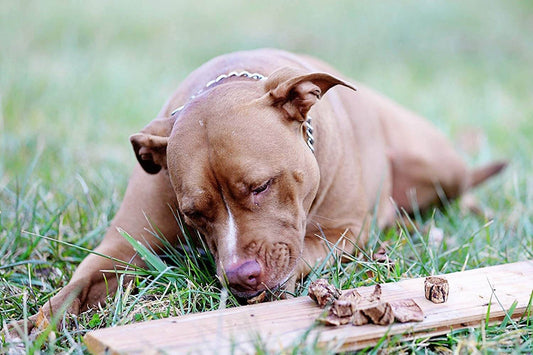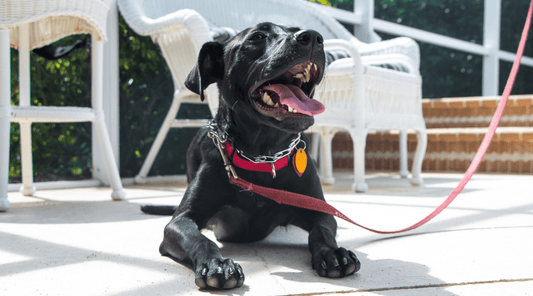
Dog Training: The Real Reason Bruno Stopped Chasing Skateboards
Dawn Miller Apr 24, 20256 Minute ReadMy neighbor Greg got a new dog. His name is Moose. He’s not a moose. But you wouldn’t know it by the sound of him galloping through my garden last Tuesday morning at 5 AM.
Greg’s trying to figure out how to train a dog. Last week at the park, he asked how I got my dogs to listen—especially big Bruno, who used to think our local skateboarding club was part of an obstacle course just for him.
The truth is: it’s not magic. And it's not about being controlling—okay a little, maybe. But it’s definitely not about being the "alpha dog." When you train a dog, you're teaching them how to understand human words. So, dog training is about better communication.
Dog experts believe that K9s can learn to respond to around 120 distinct human words. Learning English—or whatever language you choose to teach your dog—opens up the world for them in new and exciting ways.
Positive training makes it possible.
Why Every Dog Deserves Positive Dog Training
It doesn't matter if your dog is a working dog or "just a pet". Dogs learn how to act in certain situations from you—even when you don't realize you're teaching them anything.
Every time you give in to whining, laugh at hyperness, yell at barking, or chase them to attach the leash, you're actually rewarding them for "bad" behavior.
When they continue the actions, you may become frustrated until you explode. Your dog thought you were playing with them, and now you're angry?
Humans are so irrational, that's what they're thinking.
Dogs who live with humans that they see as unpredictable often exhibit anxious, destructive, and disruptive behaviors.
Now, imagine a scenario where you don't have to chase your dog around to go for a walk. They come to you every time.
Done right, dog training helps your dog:
- Feel more secure in your home
- Understand what's expected of them
- Make better choices—even around tempting trash cans and enticing skaters.
- Experience better dog health—mental, physical, and emotional
What Is Positive Dog Training?
Positive dog training means rewarding the behaviors you want rather than punishing the ones you don’t.
It’s not bribery—it’s brain science.
Every time your dog sits when you say "sit" and gets a treat, their brain releases dopamine. That feel-good chemical reinforces the habit.
After a while, they don't have to get a treat every time to feel good about following dog commands.
In other words, they start thinking, “Oh! Sitting gets me snacks. I love snacks. So I love sitting, too!”
While high-value dog treats can help you train your dog faster, it's important to realize that dogs like different rewards, such as:
- Verbal praise
- Belly rubs
- Ear Scratches
- Short play sessions
- A ball or favorite toy
You'll use each of these to train your dog by positively reinforcing the behaviors you want.
For tough distractions (like the neighborhood cat), bring out the big guns—like K9 Connoisseur beef lung bites. Bruno can smell those from the garage.
How to Train a Puppy
Ah, puppies. Tiny paws, big emotions, zero impulse control.
Here’s how to start strong with a rambunctious pup like Moose.
Start Small, Win Big
Teach simple commands first—sit, down, and come. Keep sessions short (5 minutes). Good vibes only. If you're getting frustrated, it's time for a break.
Use Treats Like Currency
High-value treats make you the most interesting thing in the room—even to a distractible puppy. Use them often and generously in the early stages.
You can give tasty treats to distract a puppy from destructive behaviors and to guide them toward socially acceptable ones.
I wrote a whole guide to puppy socialization. You'll want to check it out next, as well as this one on leash training a puppy.
Avoid Punishment
Scolding or startling your puppy (a load clap, etc.) may stop a behavior in the moment—but it also erodes trust.
Redirect instead.
Have the best treats ready. When you see what you want, actively reward it and say the command word associated with that action, even if it's after the fact.
So, if you have a puppy who's biting, wait for them to stop biting.
Say "gentle" in a cheerful voice. And give them a treat. And praise them.
Now, this doesn't work if you have to run to the treat bag. The reward has to be immediate.
I keep a treat pouch on my body most of the time.
Be Consistent
Say the same word, give the same cue, and reward the same behaviors every time.
Puppies thrive on patterns.... Like toddlers.... Or me when I’m trying to garden before coffee.
How to Train a Dog
You can teach an old dog new tricks. You just need to speak their language—and give them a reason to care.
The basic principles of positive dog training don't change when they're older. Reward the behaviors you want and teach them commands to enhance your communication with them.
Here are some adult dog-specific training tips you may need.
Have Regular Dog Bone Sessions
Chewing on meaty dog bones eases anxiety. A dog bone improves focus and builds trust. These make adult dogs easier to train.
Don't Assume They Already Know
If you adopt an adult dog, you don't know what they already learned—or have been through. They may not know how to potty outside or how to go for a walk like a civilized pup.
Take nothing for granted. Feel them out and start teaching them rather than thinking they're broken. They're not. We all have to fill in the learning gaps when we enter a new environment.
Use Clear, Simple Commands
Pick clear commands and stick to them.
Rule of thumb: Avoid commands that start with the same syllables. For example, "Go to crate" and " Go to potty" are too similar. Your dog is already moving on the "Go to..." part.
Choose short, distinct phrases.
- "Load up" or "get in" to hop into the car. Simple.
- "Down" and not "get down" if you taught them, "Get in".
- "Come", "Stay", "Let's go", "Ball", "Fetch", "Leave it", "Step In"—notice how all of these common dog commands sound very distinct? That's by design.
You can even teach them that "pineapple" means to "sit" if you want. The word itself doesn't matter. Their ability to distinguish it from other commands does.
Find What Motivates Them
Food? Praise? Dog bones? Tug-of-war with that squeaky raccoon? Use it.
I mean, for most dogs, treats rule—if you buy the ones they really want. But some dogs aren't very food motivated.
Training isn’t one-size-fits-all. So, observe what lights up that little dog face and use that as reinforcement. Combine reward methods to reinforce the behavior more quickly.
Teach Hand Gestures
Use hand gestures to reinforce your dog's command and expand communication.
If your dog learns that a flattened hand going down slowly, like you're pressing a game show buzzer in slow-mo, you can calm a dog fast, even if your mouth is full.
Use jazz hands to communicate, "Training is over. No more treats". So, your dog stops doing backflips in the living room to keep those meaty morsels coming their way.
Want to Train Smarter, Not Harder?
Get clear videos. Daily goals. Real progress.
👉 Join the 7-Day Dog Training Challenge
Available On:


Disclosure: This article may contain affiliate links, which means we may earn a small commission if you make a purchase through these links—at no extra cost to you. We only recommend products we trust and believe will benefit you and your K9.



